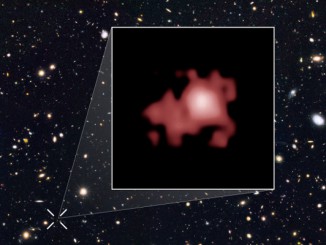M61, one of the largest members of the Virgo cluster of galaxies, is well positioned for amateurs in the evening sky, a face-on spiral that features a hidden, 5-million solar-mass black hole in its luminous core. It was first observed in 1779 and remains a popular target for Earth- and space-based telescopes. This spectacular image combines data from the Hubble Space Telescope and the FORS camera on the European Southern Observatory’s Very Large Telescope, revealing an unprecedented wealth of detail. Located more than 52 million light years from Earth, M61 is formally classified as an intermediate barred spiral. It’s also a prodigious starburst galaxy with brilliant ruby-red patches of recent star formation. Remarkably, eight supernovae have been spotted in M61 since the first was noted in 1926.




